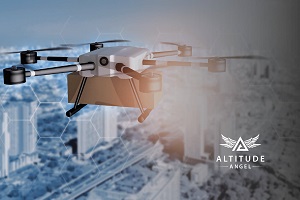Altitude Angel begins rolling out purpose-built low-altitude aviation surveillance network

Altitude Angel has initiated the deployment of a purpose-built, commercial-grade sensor network in the UK. This network is designed to detect and track drones and aircraft operating at low altitudes.
By incorporating ADS-B (automatic dependent surveillance–broadcast) and Mode S receivers and advanced SDR (software defined radio) capabilities, the network can identify drone transmissions as well as transmissions from existing and future ‘Remote ID’ transmitters. This means the sensor network will detect drones which are intentionally electronically broadcasting their location, as well as many which are not.
And due to the detection technologies used by Altitude Angel, low-flying crewed aviation can be detected and located using other passive sensors even when they are not broadcasting any signal. This additional data received by the sensor network is ‘fused’ with Altitude Angel’s already extensive air-surveillance picture (taken from primary sources – such as the sensor arrays deployed on its ARROW towers and trusted secondary providers), to create a high-resolution, near real-time digital map of the low-altitude airspace.
The capability to detect aircraft and drones at lower altitudes is becoming increasingly important and yet, it is difficult to do well. Existing systems offer patchy coverage and a ‘one-size fits all’ approach, which means low-altitude aviation broadcasts – such as those from low-flying general aviation aircraft – can be missed, are focused only one particular type of transmission, or due to the equipment used, are often delayed by up to a minute or more. Low-latency is of paramount importance to navigation: a key reason for Altitude Angel’s new network being launched.
The new network has been tested across four sites, but is being rolled out to a further 30 sites across the Midlands and Southeast of England. Altitude Angel is also announcing a programme to enable authorities to soon extend coverage where required, in turn, giving them access to the overall surveillance picture.
“In building this network we’re building the most comprehensive, real-time picture of whatever is moving through the country’s low-altitude airspace,” says Richard Parker, Altitude Angel, CEO and founder. “Coupled with our ARROW technology, the sensor network is a key component in the enablement of the digitisation of low-altitude airspace, leading toward greater visibility of air traffic, and enabling automated BVLOS (beyond visual line of sight) drone operations anywhere in the UK at scale, while providing operators of uncrewed aircraft the security they need to operate safely in unsegregated airspace.”
Most people are familiar with ‘plane tracking software’, such as Flight Radar or FlightAware, which are important for tracking large aircraft or aircraft at higher altitudes. However, the Altitude Angel network has been designed from the outset to facilitate new and future airspace users, such as drones and UAM (unmanned aerial vehicle) operators, whose operations will largely take place in lower airspace.
A dedicated, new, network is needed because at lower altitudes broadcast signals from aircraft are not always reliably received since they were designed for broadcast at higher altitudes. This network is different because it has been optimised and positioned to work across the UK’s topography, guaranteeing better reception.
Furthermore, the network is being rolled-out using certified aviation-grade hardware, and not reliant on hobbyist-style equipment, as is commonly the case. ADS-B is commonly used by general aviation and other air users to broadcast aircraft location and are sometimes carried by drones. Mode S is a secondary surveillance radar process which allows for multilateration of each aircraft according to a 24-bit address, or remote ID.
Approved third parties may apply for access to the surveillance data stream through Altitude Angel’s Developer Platform.
Comment on this article below or via Twitter @IoTGN
